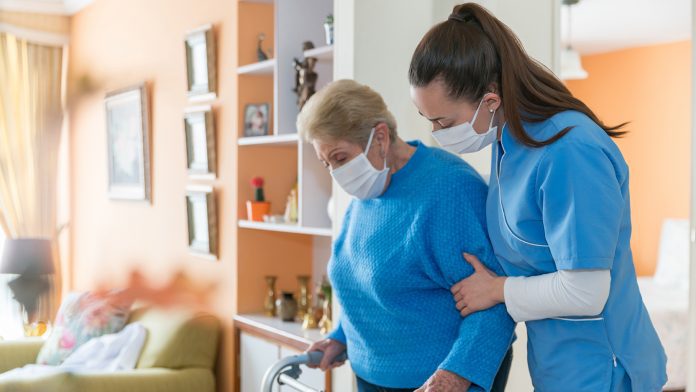
A new study has revealed the landscape of infection from COVID-19 in care homes in England, finding that over a third of residents caught the disease in the early stages of the pandemic.
The University College London (UCL) led study has illustrated the substantial rate of COVID-19 transmission in care homes in England, suggesting that over 30% of care home residents and 25% of staff contracted COVID-19 during the first two waves of the pandemic.
The study’s findings are published in the Lancet Healthy Longevity. The research is part of the Vivaldi study, which is still ongoing and was launched in June 2020 to investigate infections from SARS-CoV-2 in care homes and develop novel strategies to protect residents. The project is funded by the UK Department of Health and Social Care.
Analysing COVID-19 in care homes
To conduct their research, the team examined 9,488 blood samples from 1,434 residents and 3,288 staff between June 11, 2020, and May 7, 2021, with the participants donating a maximum of four samples taken at least eight weeks apart.
The researchers discovered that 34.6% of residents and 26.1% of staff tested positive for the nucleocapsid antibody, which indicates a prior SARS-CoV-2 infection. In contrast, only 16% of the general population tested positive for the antibody over a similar period. Moreover, the data did not include residents and staff who died of COVID-19, meaning the actual number is most likely higher.
Dr Maria Krutikov, the lead author of the study from the UCL Institute of Health Informatics, commented: “Our study shows the prevalence of COVID-19 in care homes was much higher than in the general population in England up until May this year. In the period we looked at, before the Delta variant became dominant in the UK, the proportion of care home residents with evidence of a previous infection with SARS-CoV-2 was more than double that of the general population.”
Antibodies over time
Next, the researchers examined the rate at which these antibodies waned over time, analysing blood samples from 239 residents and 380 staff that were donated over five months, on average. The tests demonstrated the antibodies became undetectable in 23% of care home residents and 35% of staff, with the team estimating that it would take 242 days (eight months) for half of the population to become antibody negative.
The study identified that the antibodies lasted longer among residents than in staff in care homes. A theory not related to this study hypothesises that this is because residents are more likely to have a severe infection, meaning their antibody response will last longer. Additionally, it is also possible that residents who survived COVID-19 are robust, which is demonstrated in their immune response.
Professor Laura Shallcross, the senior author of the study from the UCL Institute of Health Informatics, leader of the Vivaldi study looking at COVID-19 in care homes, said: “In our study, the nucleocapsid-specific antibody disappears within a year and the wide use of tests targeting these antibodies to see if people have had COVID-19 before could underestimate the number of prior infections.
“It is important to distinguish immunity caused by infection from immunity generated by a vaccine within a population. Underestimating the number of past infections could affect our estimates of the effectiveness of a vaccine and the level of protection against infection in care homes, as both of these are boosted by naturally acquired immunity.
“We would like to thank all the care home staff and residents who took part in the research. Being able to track the spread of SARS-CoV-2 in care homes, among an elderly population often excluded from research, is important in helping us better understand the pandemic and prevent new cases.”








